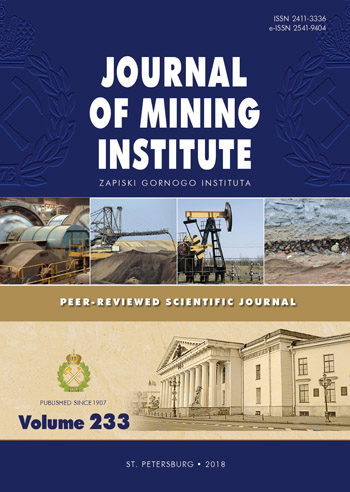Analysis of possible enhancementof properties of VK15 material used for drilling tools
- 1 — Ph.D., Dr.Sci. professor Bauman Moscow State Technical University
- 2 — Laboratory Scientist Bauman Moscow State Technical University
- 3 — Process engineer OJSC «Zavod Tekhnicheskoy Keramiki»
Abstract
Traditionally, when drilling hard and abrasive rocks, it is recommended to use a tungsten-cobalt hard alloy VK15. The analysis of information on the possibility of improving the potential of the material has demonstrated the existence of mechanisms that provide structural transformations that enhance its strength, hardness and toughness. The use of such technology instead of traditional methods will lead to an increase in the operating efficiency and durability of the tool. During the work, experimental samples of alloy VK15 were obtained by sintering in four different modes. Then their properties were analyzed. The results of the metallographic study carried out on the «Carl Zeiss» microscope made it possible to estimate the distribution of tungsten carbide grains in cobalt bon and show the grinding of the carbide phase. Thus, with traditional sintering, the amount of tungsten carbide grains with an average size of less than 1 μm in diameter from the entire size range reaches 19.5 %, while after additional heat treatment with a holding time of 1280 °C, the value was 41.5 %; 900 °C – 59.1 %; 600 °С – 54.5 %. The maximum improvement results were the following: hardness by 18 %, a coercive force by 49 %, and crack resistance by 11 % of the traditional alloy, there were achieved at 900-1280 °C. A hypothesis has been put forward on the formation of additional structural elements not detected by the methods of optical metallography. Studies of the topology and structure of the samples on an atomic force microscope confirmed the presence of nanoscale inclusions from 20 to 40 nm (presumably tungsten carbide) in a cobalt bond.For VK15, comparative studies of properties and analysis of the microstructure of experimental samples obtained by the traditional sintering and modified technology have shown that the sintering mode at 900 °C is a priority.
Funding
The work was carried out with the financial support of applied scientific research of the Ministry of Education and Science of the Russian Federation. Agreement on the provision of subsidy No. 14.579.21.093. The unique identifier is RFMEFI57915X0093.
